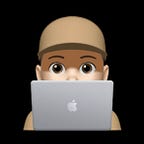What Blended Learning Is and Why You Should Use It In Your Classroom
Blended learning has become an increasingly popular method of instruction in recent years, and for good reason. Blended learning combines the best of both online and face-to-face instruction, providing students with a more personalized learning experience that can improve their academic achievement. In this post, I’ll explore what blended learning is, its benefits for students, how teachers can use it in their classrooms, and some best practices for blended learning.
What is blended learning? Blended learning is an instructional approach that combines online and face-to-face elements. This type of instruction can take many different forms, but all blended learning models have two things in common: students learn at least partially online, and there is some element of student control over their learning.
There are many benefits of blended learning for students. One of the most important benefits is that blended learning can provide a more personalized learning experience for students. With blended learning, teachers can use online tools to customize instruction to meet the individual needs of each student. This type of instruction can also help students learn at their own pace, allowing them to spend more time on concepts they find difficult and less time on concepts they find easy. Additionally, blended learning can give students more opportunities to practice what they are learning and receive immediate feedback.
How can I use blended learning in my classroom? There are many different ways that teachers can use blended learning in their classrooms. One common way is to use online resources for homework and practice, reserving face-to-face instruction time for more interactive activities such as group work, discussions, and hands-on learning. Another option is to use online learning platforms as a supplement to traditional instruction, providing extra support for students who need it. Additionally, some teachers use blended learning as a way to flip their classrooms, delivering instruction online outside of class and using class time for activities such as projects, small-group work, and discussion.
What are some best practices for blended learning? When implementing blended learning in your classroom, there are a few best practices to keep in mind. First, make sure that your students have adequate access to technology and that they are comfortable using the online learning platform you have chosen. Second, start small and gradually increase the amount of blended learning you do in your classroom over time. Third, create a balance between online and face-to-face instruction so that students are still getting the interactivity and personal connection that is so important for learning. Finally, make sure to provide students with clear expectations and instructions for how to succeed in a blended learning environment.
What challenges do teachers face when implementing blended learning? While there are many benefits of blended learning, there are also some challenges that teachers face when implementing this type of instruction in their classrooms. One challenge is that blended learning can be time-consuming to set up and manage. Additionally, some students may struggle with the transition to a more independent learning environment, and it is important to provide support for these students. Finally, it is important to make sure that you are using high-quality online resources and that your students have adequate access to technology.
Despite these challenges, blended learning can be a powerful instructional approach that can benefit both teachers and students. By using a blend of online and face-to-face instruction, teachers can provide a more personalized learning experience for their students while still maintaining the interactivity and personal connection that are so important for learning.
